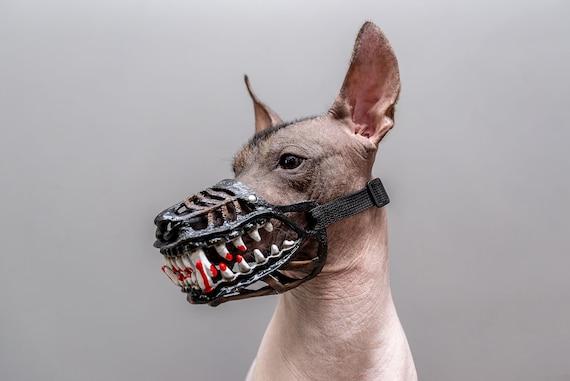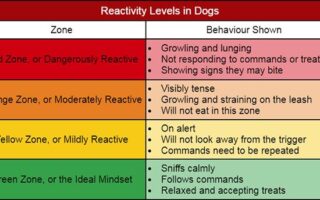Introduction: A Solution for Curious Canines – The Dog Muzzle to Curb Unwanted Snacking
In a world brimming with tantalizing smells and intriguing sights, our four-legged companions often find themselves caught in a whirlwind of curiosity. Whether it’s an unattended picnic basket, a fragrant pile of garbage, or the irresistible scent of fallen treats on a walk, dogs have an uncanny ability to turn any outing into an all-you-can-eat buffet. While their enthusiastic scavenging may elicit laughter and eye rolls, it can also pose serious health risks. Enter the dog muzzle—not a tool of punishment, but a practical accessory designed to help our dogs navigate their environments safely. In this article, we will explore how a well-fitted muzzle can serve as a protective barrier, allowing dogs to enjoy the great outdoors without the worry of harmful snacking. Join us as we delve into the benefits, types, and proper use of muzzles, and discover how this simple device can enhance both your dog’s adventures and your peace of mind.
Table of Contents
- Understanding the Reasons Behind Your Dogs Unruly Eating Habits
- Choosing the Right Muzzle: Types and Features for Effective Prevention
- Training Techniques to Complement Muzzle Use for a Safer Environment
- Maintaining Dog Comfort: Tips for Fitting and Acclimating to a Muzzle
- Q&A
- Insights and Conclusions
Understanding the Reasons Behind Your Dogs Unruly Eating Habits
Unruly eating habits in dogs can stem from a variety of factors that may surprise you. Understanding these reasons is crucial for addressing the behavior effectively. Some dogs eat everything in their path due to natural instincts inherited from their ancestors, who scavenged for food. Others may display this behavior out of boredom or anxiety, resorting to obsessive eating when left alone or overwhelmed. Additionally, dogs that have had a history of food scarcity might exhibit a compulsion to consume whatever they find as a protective measure against potential future hunger.
It’s also essential to consider the role of training and discipline. Dogs that haven’t been taught to respect your commands might explore their surroundings indiscriminately. Establishing a consistent feeding routine can help mitigate these habits, as well as providing them with plenty of mental stimulation and physical exercise. If a dog consistently shows interest in eating non-food items, some owners have found that using a muzzle during walks or outdoor play can serve as a temporary yet practical solution. Consider the following benefits of utilizing a muzzle in your training transition:
| Benefit | Explanation |
|---|---|
| Reduces Injury | Prevents ingestion of harmful objects or foods. |
| Encourages Focus | Helps the dog concentrate on walking rather than scavenging. |
| Builds Command Respect | Reinforces training cues and boundaries. |
Choosing the Right Muzzle: Types and Features for Effective Prevention
When it comes to preventing your dog from scavenging and eating everything in sight, selecting the appropriate muzzle is essential for both safety and comfort. Basket muzzles are a popular choice for this purpose, as they allow for ventilation and the ability to drink water, while still limiting access to unwanted snacks. They come in various materials like plastic or metal, and their designs ensure your dog can open its mouth to pant yet remain restrictively safe from eating debris. Additionally, soft muzzles can be considered for short-term use, especially if your dog needs a more snug fit; however, they should not be used for extended periods since they limit panting and drinking.
In terms of features, look for muzzles that have adjustable straps to achieve a perfect fit, as this will prevent slipping and discomfort. Consider adding padding around the nose area for extra comfort during wear, especially for longer outings. To help you make an informed decision, here’s a quick comparison of different muzzle types:
| Type | Material | Key Features | Best For |
|---|---|---|---|
| Basket Muzzle | Plastic/Metal | Allows panting, drinking, and breathing | Long walks, preventive measures |
| Soft Muzzle | Nylon/Fabric | Snug fit, less air circulation | Vet visits, brief uses |
| Cage Muzzle | Metal | Very secure, great ventilation | Aggressive dogs, training sessions |
Training Techniques to Complement Muzzle Use for a Safer Environment
While a muzzle can be an effective tool to prevent your dog from munching on unwanted materials, pairing it with complementary training techniques will enhance safety and keep your canine companion engaged. Here are some methods to support muzzle training:
- Positive Reinforcement: Reward your dog with treats and praise when they successfully ignore tempting objects during walks.
- Desensitization: Gradually introduce the muzzle in a calm environment, allowing your dog to associate it with positive experiences, such as playtime or treats.
- Focus Training: Teach your dog to maintain eye contact or respond to commands despite distractions, reinforcing their focus on you and away from scavenging.
- Impulse Control Exercises: Practice “leave it” and “drop it” commands to strengthen self-control around tempting objects.
Incorporating these training techniques with muzzle use not only enhances safety but also fosters a trusting relationship between you and your dog. Below is a simple table that outlines the essential steps and tips for effective training:
| Training Step | Tip |
|---|---|
| Introduce Muzzle | Use treats to create a positive association. |
| Practice Commands | Start in a distraction-free area to build confidence. |
| Real-life Scenarios | Gradually expose them to environments with more distractions. |
| Consistency | Repeat training sessions regularly for reinforcement. |
Maintaining Dog Comfort: Tips for Fitting and Acclimating to a Muzzle
Ensuring your furry friend is comfortable wearing a muzzle is essential for stress-free acclimatization. Start by selecting the right type of muzzle that suits your dog’s breed, size, and temperament. A well-fitting muzzle should allow for panting and drinking while preventing unwanted eating. To begin the acclimatization process, consider the following steps:
- Familiarization: Introduce the muzzle to your dog gradually. Let them sniff it and explore it freely without forcing it on their face.
- Positive Reinforcement: Associate the muzzle with positive experiences. Place treats inside the muzzle or give them treats while they are wearing it to create a positive association.
- Incremental Wearing: Allow your dog to wear the muzzle for short periods at first. Gradually increase the duration as they become more comfortable.
- Observe and Adjust: Pay attention to your dog’s body language. If they show signs of discomfort, it may be necessary to adjust the fit or take a break.
Your goal should be to make the experience as stress-free as possible. Consider creating a checklist to track your dog’s progress in getting accustomed to the muzzle. Here’s a simple way to organize this process:
| Day | Activity | Duration |
|---|---|---|
| 1 | Introduce muzzle | 5-10 mins |
| 2 | Positive reinforcement | 10 mins |
| 3 | Short wearing session | 5 mins |
| 4 | Increase wearing time | 10-15 mins |
Q&A
Q&A: Dog Muzzle to Stop Eating Everything
Q1: Why would I need a muzzle for my dog?
A: A muzzle can be a helpful tool if your dog has a habit of eating everything in sight—think of it as an added layer of safety. Dogs are naturally curious and will often investigate their environment with their mouths. Unfortunately, this can lead to them swallowing harmful objects or indulging in unhealthy snacks. Using a muzzle restricts their ability to eat anything that could pose a risk to their health.
Q2: Are all muzzles the same? What should I look for?
A: Not all muzzles are created equal! When choosing a muzzle, look for one that’s well-ventilated and comfortable for your dog to wear. A basket muzzle offers a good balance of security and comfort, allowing your dog to breathe freely, pant, and drink water while preventing them from snacking on unwanted items. Ensure it fits snugly but isn’t too tight—after all, nobody likes being uncomfortable!
Q3: Is it cruel to use a muzzle?
A: When used correctly, muzzles are not cruel. Instead, they are a responsible way to manage your dog’s behavior. The goal is to keep your dog safe while you work on training them to avoid scavenging. It’s essential to introduce the muzzle gradually, allowing your dog to associate it with positive experiences, such as treats or playtime.
Q4: How can I train my dog to accept a muzzle?
A: Training your dog to use a muzzle can be a simple process with patience and positive reinforcement. Start by introducing the muzzle as a fun object—let them sniff it and reward them for being curious. Gradually work up to placing it on their snout for short periods, rewarding calm behavior. Over time, increase the duration they wear it, ensuring they associate it with positive experiences throughout the training.
Q5: Can I let my dog wear a muzzle all day?
A: While it may be tempting to keep your dog’s muzzle on as a periodic safeguard, it’s essential to monitor them closely when wearing it. Muzzles should not be a substitute for supervision. Allow your dog to remove it during play and rest periods to ensure their comfort and to support good emotional health.
Q6: Will my dog still be able to drink water with a muzzle on?
A: Yes! If you choose a basket muzzle, your dog will be able to drink, pant, and even accept treats while wearing it. This design ensures that they stay hydrated and can cool down during exercise, which is especially important during warmer weather.
Q7: How long do I need to use a muzzle to change my dog’s habit?
A: The duration will vary depending on your dog’s individual behavior and training progress. Some may adjust quickly, while others might need a more extended period of supervision and training. The goal is to teach your dog to leave things alone—once they consistently show improved behavior while off-leash, you may slowly reduce muzzle use. Consistency and patience are key.
Q8: What should I do if my dog shows signs of distress while wearing a muzzle?
A: If your dog appears uncomfortable or distressed, it’s crucial to remove the muzzle immediately. Reassess the fit and material of the muzzle or consider seeking professional help from a dog trainer. Remember, the muzzle should be a tool for their safety, not a source of anxiety.
Q9: Are there alternatives to using a muzzle?
A: Yes, there are alternatives! Working on fundamental obedience training can significantly reduce scavenging behaviors. Teaching commands like “leave it” or ”drop it” can be invaluable skills. Additionally, providing engaging toys and mental stimulation can redirect their curiosity away from unsuitable snacks. However, a muzzle can be an essential tool while you’re working on these behaviors, especially in environments where you can’t closely supervise your dog.
Q10: Should I consult a vet before using a muzzle?
A: Consulting your veterinarian can provide additional insights tailored to your dog’s specific needs. They can help rule out any underlying health issues related to scavenging and may recommend safe alternatives or training methods to discourage this behavior. It’s always a great practice to involve a professional when making decisions about your pet’s safety and well-being.
Insights and Conclusions
while the idea of a dog muzzle may conjure images of restriction, it can be a practical and compassionate solution for pet owners dealing with voracious eaters. By selecting the right muzzle and introducing it gradually, you can help your furry friend learn to navigate their environment safely—ensuring that their explorations don’t lead to harmful consequences. Remember, a muzzle should never be a substitute for training or supervision but rather a tool to enhance both safety and peace of mind. With patience and positive reinforcement, your dog can enjoy the world around them without the risk of unwanted snacking. Explore your options, seek guidance from professionals, and embark on this journey towards a healthier, happier canine companion, one mindful step at a time.



